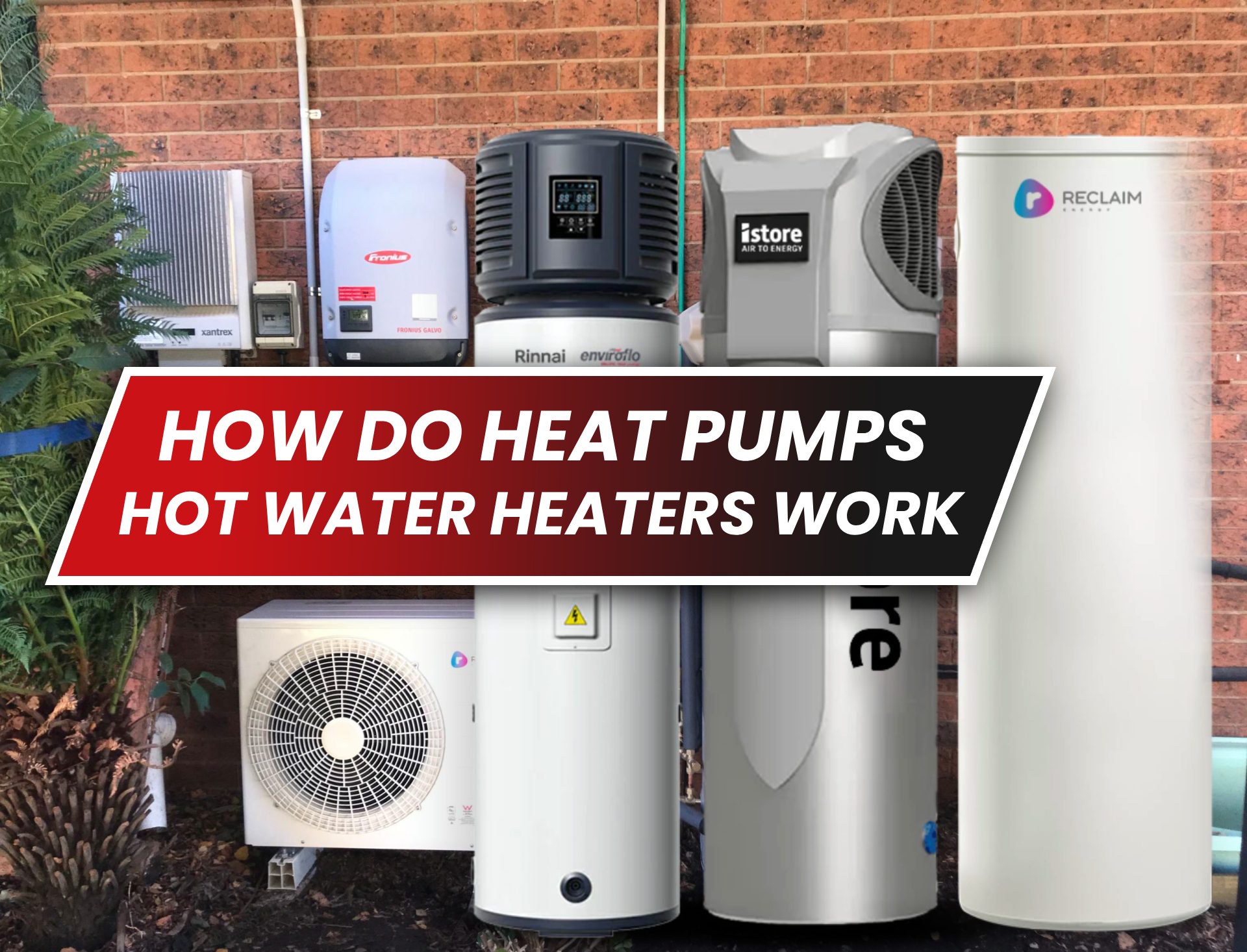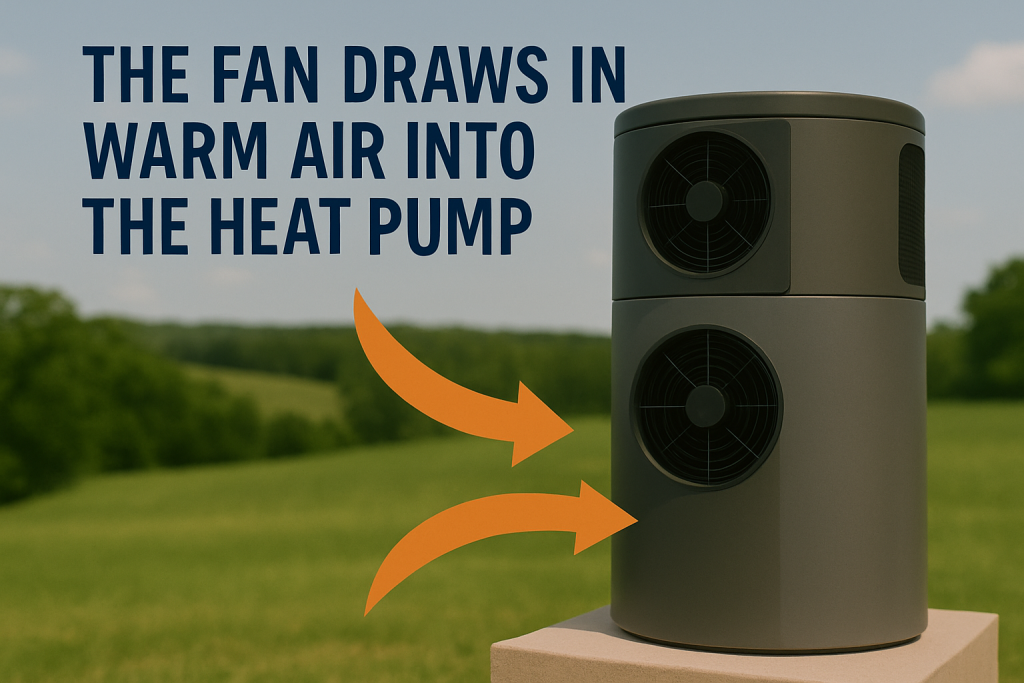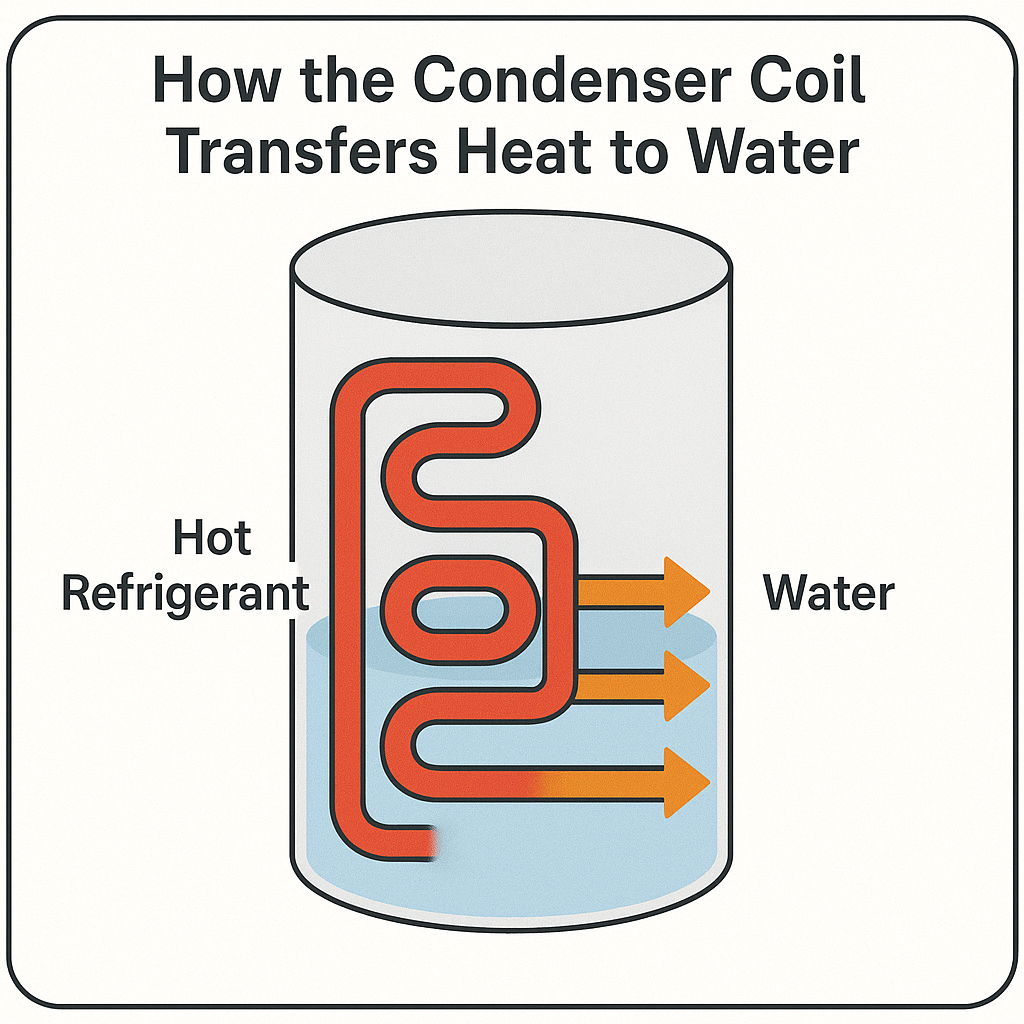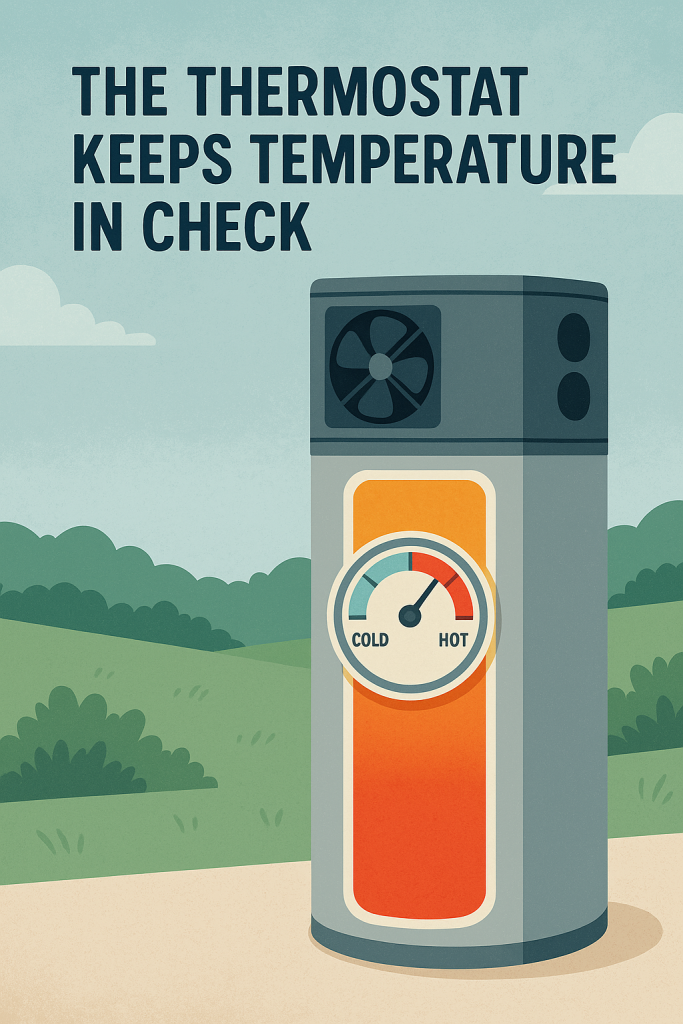
According to a 2021 research by Consumer Reference Group (CRG), approximately 28% of Australians need help to afford their energy […]

Ever wondered how you can heat your water using the air around you?
It might sound like magic, but it’s actually smart, energy-efficient science. A hot water system heat pump doesn’t burn energy to create heat—instead, it cleverly extracts it from the air and transfers it to your water.
But “how do heat pump water heaters work behind the scenes?”
The 6Wresearch projects that the heat pump hot water systems market will grow at a CAGR of 10.7% from 2024 to 2030, and for good reason: heat pumps use energy more efficiently and are good for the environment.
The reason behind that is that these systems heat water for domestic use without using electric coils or burning fossil fuels.
To do this, the system captures heat from the environment using the principles of thermodynamics and then transfers it to the water stored in a tank.
Think of them operating like a refrigerator but in reverse.
Instead of taking heat from the system to achieve the cooling effect, heat pumps collect heat from the surroundings to warm a refrigerant.
The heated refrigerant then flows through a coil in the storage water tank, where it transfers heat to the water in the tank.
Since this process avoids using electric heating elements, only a small quantity of electricity is needed to pump the refrigerant as it collects and transfers heat.
According to DCCEEW, this process saves about 70% of the energy that would be needed to heat the same amount of water using an electric instantaneous water heater.
Additionally, the process minimises greenhouse gas emissions and has the potential to lower them by up to 81% by 2030, as noted by Beyond Zero Emissions.
But how does this remarkable technology function?
To understand its inner workings, let’s explore the key components that comprise a heat pump water heater system and what they do. Here we go!
The working of a heat pump hot water system begins with the fan (in some systems, there can be more than one fan) forcing more air into the unit. This increases the exposure of the unit to the ambient air, allowing for greater heat absorption.
The more air forced into the system, the more heat is absorbed, and this explains why some units have more than one fan.

Once the fan forces air through the system, the first and most important place where this air goes is in the evaporator. The evaporator is made of coiled tubes containing a cold, low-pressure refrigerant.
Since the temperature of the air forced into this system is higher than the temperature of the refrigerant, heat naturally gets drawn towards the coil due to the temperature difference.
The heat is then absorbed by the refrigerant, increasing its temperature.
The increased temperature transforms the liquid refrigerant into a low-temperature vapour or gas. This gaseous refrigerant then flows towards the compressor.
The already heated refrigerant gas then enters the compressor, where its pressure is increased significantly.
This further raises the temperature, turning the low-temperature vapour into a high-temperature vapour. Now, the high-temperature vapour travels through to the condenser to transfer heat.
The superheated refrigerant exits the compressor and enters the condenser, a coiled tube inside the storage tank. As the hot refrigerant flows through this coil, it comes in direct contact with the water in the tank, transferring its thermal energy.

This transfer process increases the water’s temperature to the desired level set by the thermostat.
After transferring heat to water, the refrigerant becomes a liquid again but remains under high pressure.
The expansion valve then plays a crucial role by lowering this pressure. It regulates the refrigerant’s flow from the high-pressure side to the low-pressure side, thereby reducing its pressure significantly.
This significant pressure reduction allows the refrigerant to expand and cool down, preparing it to restart the cycle by returning to the evaporator and absorbing more heat from the surroundings.
The continuous compression, heat transfer, and expansion cycle enables heat pumps to efficiently heat water using minimal electricity and without needing traditional heating coils or burning gases.
Located at the top of the tank, the thermostat monitors water temperature. When temperatures fall below the target level, the thermostat activates the heat pump.
The fan pulls in warm air; the evaporator absorbs heat, restarting the cycle. If the water temperature exceeds the set target, the thermostat signals the pump off to prevent energy waste or overheating that can damage the parts of the pump.

That’s how heat pump hot water systems operate. They use less electricity and emit minimal greenhouse gases into the environment.
This makes them a great choice for anyone looking to lower their energy bills and carbon footprint, while still enjoying domestic hot water systems. Get yours installed today and join those already enjoying these benefits and many more.
Heat pump water heaters are the most energy-efficient options you can switch to as far as heating water is concerned.
These units use only 30% to 40% of the power needed by electric heaters to heat the same volume of water to the same temperature.
The reason they consume so little power is that they don’t need power to create heat.
Rather, they need it to capture and move ambient heat from the air to the water in the tank.
It is practically possible to run out of hot water with a heat pump, especially if you didn’t size yours properly.
Heat pumps are known to heat water a bit more slowly compared to gas and electric.
So, if you have high water usage (like when multiple individuals are drawing hot water at the same time), you can run out of hot water.
This should, however, not worry you as modern heat pumps have a backup heating element that reheat water much faster.
Also, it is a problem you can completely avoid with proper heat pump sizing.
Under normal operations, your heat pump water heater will only need around 2 to 4 hours to heat a water tank fully.
When it’s cold or if you have switched the system to energy-saving modes, you may have to wait for a longer duration than when it’s hot and in high-performance mode.
Additionally, if you have a hybrid system with a backup heating element, you might need less time to heat the water tank fully.
Modern heat pump water heaters can last anywhere between 15 and 20 years.
They can even last longer if you observe proper care and maintenance.
Regular maintenance includes things like cleaning filters and flushing the tank annually to remove sediments that may harm the heating element and corrode the tank.
A common issue is reduced performance in cold climates.
Since heat pumps draw heat from the surrounding air, they become less efficient when temperatures drop.
In such cases, they may rely more on the electric backup heater, which increases energy use and operating costs.
On average, it runs about 2 to 4 hours per day.
The exact runtime depends on how much hot water is used, the tank size, and the system’s efficiency.
High-demand households or cooler environments may cause the unit to run more frequently, especially if it’s in heat pump-only mode.
It’s not advisable to turn it off at night, as reheating a cold tank in the morning can use more energy than maintaining a stable temperature.
Instead, make use of built-in scheduling features, energy-saving modes, or vacation settings to reduce energy use during low-demand periods without sacrificing comfort.